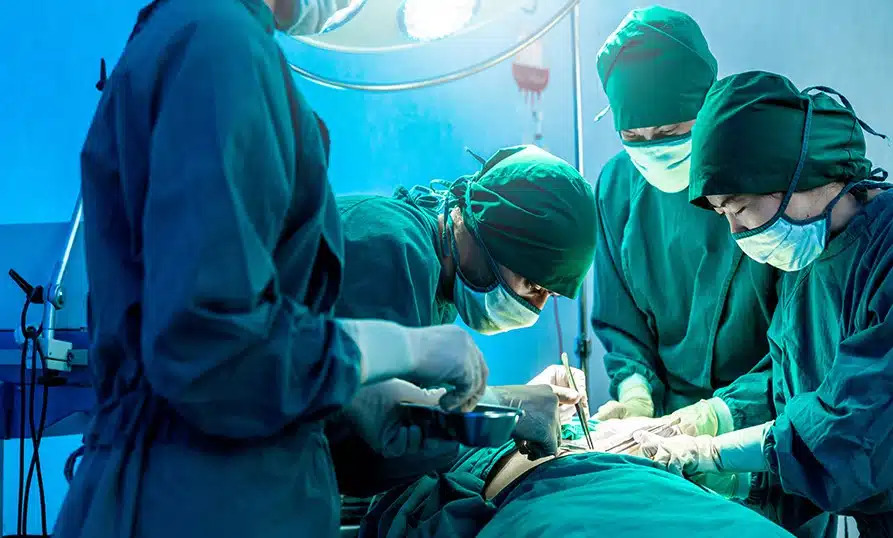
Biocompatible Coating Market
The global biocompatible coating market is witnessing significant growth, driven by advancements in medical technologies and the rising incidence of surgical procedures worldwide. Valued at USD 16.63 billion in 2023, the market is projected to expand at a compound annual growth rate (CAGR) of 12.7% from 2024 to 2032, reaching an estimated USD 48.89 billion by the end of the forecast period. This comprehensive analysis delves into the factors propelling this growth, explores key market segments, and highlights prominent players shaping the industry landscape.
1. Introduction to Biocompatible Coatings
Biocompatible coatings are specialized materials applied to medical devices and implants to enhance their compatibility with biological tissues. These coatings aim to reduce adverse reactions, prevent infections, and improve the overall functionality and longevity of medical implants. Common applications include cardiovascular devices, orthopedic implants, dental implants, and various surgical instruments.
2. Market Drivers
Several factors contribute to the robust growth of the biocompatible coating market:
2.1 Increasing Incidence of Surgical Procedures
The surge in surgical interventions globally is a primary driver. Advances in medical technology have expanded the scope and frequency of surgical procedures, necessitating the use of advanced medical implants and devices that require biocompatible coatings to ensure patient safety and device efficacy.
2.2 Growing Aging Population
An aging demographic leads to a higher prevalence of chronic diseases such as cardiovascular disorders, arthritis, and diabetes, which often require surgical interventions and implantable devices. This trend fuels the demand for biocompatible coatings that enhance the performance and durability of these implants.
2.3 Technological Advancements
Innovations in material science and coating technologies have resulted in the development of more effective and durable biocompatible coatings. These advancements improve the integration of implants with biological tissues, reduce the risk of rejection, and extend the lifespan of medical devices.
2.4 Rising Awareness and Regulatory Support
Increased awareness about the benefits of biocompatible coatings and stringent regulatory standards ensure the safety and effectiveness of medical devices. Regulatory bodies worldwide are enforcing strict guidelines, encouraging manufacturers to adopt high-quality biocompatible coatings.
Get a Free Sample Report with Table of Contents
3. Market Segmentation
The biocompatible coating market can be segmented based on product type, application, end-user, and geography.
3.1 By Product Type
- Hydrogel Coatings: Known for their high water content and biocompatibility, used extensively in cardiovascular and orthopedic implants.
- Polymer Coatings: Offer versatility and are used in a wide range of medical devices.
- Metallic Coatings: Provide enhanced durability and are often used in dental implants and surgical instruments.
- Ceramic Coatings: Known for their hardness and biocompatibility, suitable for high-wear applications.
3.2 By Application
- Cardiovascular Devices: Stents, heart valves, and vascular grafts.
- Orthopedic Implants: Joint replacements, bone screws, and plates.
- Dental Implants: Titanium-based dental fixtures.
- Surgical Instruments: Tools requiring sterilizable and biocompatible surfaces.
- Others: Includes various other medical devices requiring specialized coatings.
3.3 By End-User
- Hospitals and Clinics: Primary consumers of coated medical devices for surgical procedures.
- Medical Device Manufacturers: Companies that integrate biocompatible coatings into their products.
- Research and Development Laboratories: Institutions involved in developing new medical technologies.
3.4 By Geography
- North America: Dominates the market due to advanced healthcare infrastructure and high adoption rates of medical technologies.
- Europe: Significant market presence with stringent regulatory standards and technological advancements.
- Asia-Pacific: Fastest-growing region driven by increasing healthcare expenditures and a large patient population.
- Rest of the World: Includes emerging markets with growing healthcare sectors.
4. Market Growth Projections
The biocompatible coating market is expected to grow at a CAGR of 12.7% between 2024 and 2032. This growth is underpinned by the continuous innovation in coating technologies, rising demand for minimally invasive surgeries, and the expansion of healthcare infrastructure, especially in developing regions.
Key Growth Factors:
- Innovation in Coating Technologies: Development of coatings with enhanced properties such as antimicrobial activity, improved wear resistance, and better integration with biological tissues.
- Expanding Healthcare Infrastructure: Increased investment in healthcare facilities and medical devices in emerging economies.
- Regulatory Approvals: Streamlined processes for approving biocompatible coatings, encouraging faster adoption by medical device manufacturers.
- Collaborations and Partnerships: Strategic alliances between coating manufacturers and medical device companies to co-develop advanced products.
5. Key Players in the Biocompatible Coating Market
The biocompatible coating market is highly competitive, with several prominent players driving innovation and market growth. Among them, Surmodics, Inc., DSM Biomedical B.V., and Hydromer, Inc. stand out due to their significant contributions to the industry.
5.1 Surmodics, Inc.
Overview: Surmodics, Inc. is a leading provider of medical device coatings and surface modification technologies. Established in 1979 and headquartered in Eden Prairie, Minnesota, Surmodics specializes in enhancing the performance and safety of medical devices through proprietary coating solutions.
Product Portfolio:
- Drug-Coated Balloons (DCBs): Utilized in cardiovascular interventions to deliver therapeutic agents directly to the affected area, reducing restenosis rates.
- Surface Modification Technologies: Improve the biocompatibility and functionality of stents, catheters, and other implantable devices.
- Nanocoatings: Provide advanced properties such as antimicrobial resistance and improved mechanical strength.
Market Position: Surmodics holds a strong market position due to its innovative product offerings and extensive research and development capabilities. The company’s collaborations with leading medical device manufacturers enable it to stay at the forefront of technological advancements.
Strategic Initiatives:
- Research and Development: Significant investment in R&D to develop next-generation coatings with enhanced performance characteristics.
- Global Expansion: Expanding its presence in key international markets to capitalize on the growing demand for biocompatible coatings.
- Acquisitions and Partnerships: Strategic acquisitions to broaden its product portfolio and strengthen its market presence.
Recent Developments:
- Introduction of new hydrogel-based coatings that offer improved biocompatibility for orthopedic implants.
- Partnership with a leading cardiovascular device manufacturer to develop advanced drug-eluting stents.
5.2 DSM Biomedical B.V.
Overview: DSM Biomedical B.V., a subsidiary of Royal DSM, is a prominent player in the biocompatible coatings market. Based in the Netherlands, DSM Biomedical focuses on developing sustainable and high-performance coating solutions for medical devices.
Product Portfolio:
- Polymer-Based Coatings: Designed for a wide range of medical applications, offering versatility and reliability.
- Antimicrobial Coatings: Prevent infections by inhibiting the growth of harmful microorganisms on medical devices.
- Biodegradable Coatings: Suitable for temporary implants and devices, ensuring safe degradation post-application.
Market Position: DSM Biomedical leverages its parent company’s expertise in materials science to deliver cutting-edge coating solutions. Its commitment to sustainability and innovation positions it as a preferred partner for environmentally conscious medical device manufacturers.
Strategic Initiatives:
- Sustainable Development: Focus on developing eco-friendly coatings that reduce environmental impact without compromising performance.
- Innovation in Coating Technologies: Continuous development of new coating materials and application methods to meet evolving market needs.
- Global Reach: Strengthening its distribution network to serve a global clientele effectively.
Recent Developments:
- Launch of a new line of biodegradable coatings tailored for use in temporary orthopedic implants.
- Collaboration with a leading dental implant manufacturer to enhance the biocompatibility and longevity of dental fixtures.
5.3 Hydromer, Inc.
Overview: Hydromer, Inc. is a specialized manufacturer of hydrogels and biocompatible coatings for medical and industrial applications. Headquartered in Santa Barbara, California, Hydromer is renowned for its innovative hydrogel technologies that improve the performance of medical devices.
Product Portfolio:
- Hydrogel Coatings: Offer superior biocompatibility and moisture retention, ideal for cardiovascular and orthopedic implants.
- Pressure-Sensitive Adhesives (PSAs): Used in various medical devices to ensure secure attachment without compromising biocompatibility.
- Advanced Material Solutions: Development of novel materials that enhance the functionality and durability of medical implants.
Market Position: Hydromer distinguishes itself through its focus on hydrogel technologies, which are critical for applications requiring high levels of biocompatibility and flexibility. The company’s niche specialization allows it to cater to specific market needs effectively.
Strategic Initiatives:
- Product Innovation: Investing in the development of new hydrogel formulations with enhanced properties such as increased strength and longer degradation times.
- Market Diversification: Expanding its product offerings to include a broader range of biocompatible coatings for diverse medical applications.
- Collaborative Research: Partnering with research institutions and medical device manufacturers to co-develop innovative coating solutions.
Recent Developments:
- Introduction of a new hydrogel coating that significantly improves the integration of orthopedic implants with bone tissue.
- Partnership with a major cardiovascular device company to develop advanced drug-eluting stents with enhanced performance.
6. Regional Market Analysis
The biocompatible coating market’s growth varies across different regions, influenced by factors such as healthcare infrastructure, regulatory environment, and economic conditions.
6.1 North America
North America, particularly the United States, dominates the biocompatible coating market. The region’s advanced healthcare infrastructure, high adoption rate of medical technologies, and significant investment in research and development contribute to its leading position. Additionally, the presence of key market players and stringent regulatory standards ensure high-quality products and drive market growth.
6.2 Europe
Europe holds a substantial market share, supported by robust healthcare systems and a strong emphasis on technological innovation. Countries like Germany, France, and the Netherlands are prominent contributors, with numerous companies investing in the development of advanced biocompatible coatings. The region’s focus on sustainability also promotes the adoption of eco-friendly coating solutions.
6.3 Asia-Pacific
The Asia-Pacific region is the fastest-growing market for biocompatible coatings, driven by increasing healthcare expenditures, a large and aging population, and the rapid expansion of healthcare infrastructure in countries like China and India. The region’s growing medical device manufacturing sector further fuels demand for high-quality biocompatible coatings.
6.4 Rest of the World
Regions such as Latin America, the Middle East, and Africa are experiencing steady growth in the biocompatible coating market. Improvements in healthcare infrastructure and rising awareness about advanced medical technologies contribute to the market’s expansion in these areas.
7. Challenges and Opportunities
7.1 Challenges
- High Cost of Advanced Coatings: The development and application of sophisticated biocompatible coatings can be expensive, potentially limiting their adoption in cost-sensitive markets.
- Stringent Regulatory Requirements: Compliance with diverse regulatory standards across different regions can pose challenges for manufacturers, increasing time-to-market and operational costs.
- Technical Complexity: The application of biocompatible coatings requires specialized knowledge and equipment, necessitating continuous investment in technology and training.
7.2 Opportunities
- Technological Innovations: Ongoing advancements in material science present opportunities to develop more effective and durable coatings, enhancing market growth.
- Emerging Markets: Expansion into developing regions with growing healthcare sectors offers significant growth potential.
- Personalized Medicine: The trend towards personalized medical treatments can drive demand for customized biocompatible coatings tailored to individual patient needs.
8. Future Outlook
The biocompatible coating market is poised for substantial growth over the next decade, driven by continuous innovations, expanding healthcare infrastructure, and increasing demand for advanced medical devices. Key trends shaping the future of the market include:
- Integration of Nanotechnology: Leveraging nanotechnology to develop coatings with enhanced properties such as increased strength, improved biocompatibility, and antimicrobial resistance.
- Sustainability Focus: Developing eco-friendly and sustainable coating solutions to meet the growing demand for environmentally responsible products.
- Digital Transformation: Utilizing digital technologies for better process control, quality assurance, and personalized coating solutions.



